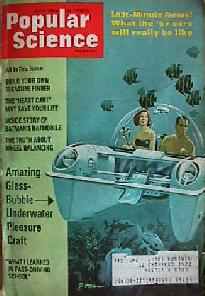[Date Prev][Date Next][Thread Prev][Thread Next][Date Index][Thread Index]
Re: [PSUBS-MAILIST] Hull material
Hi, Robert - I don't think we've "met".
Welcome :-)
I get the impression, and please correct me if I'm
off the mark, that you'd like to maintain the freedom of designing a sub with
compound curvature, possibly avoiding the "tin can" look (no offense to the
tin can guys!!!).
One option, and this is in support of the steel
crowd, is to build your pressure hull using the basic engineered-to-death shapes
another member suggested. Cylinders, end caps, plate, etc. Use the
composite to form an ambient pressure fairwater around your "tin can" in
any shape you want that's hopefully hydrodynamic. You maintain the safety
factor of proven engineering AND pull off the artsy side.
Second option would be to, as Carsten suggests, use
ferrocement. It too is proven. Concrete is easy to work with and
very tough. With a tiny cockpit as you mentioned I'm not sure your hull
thickness would compensate for the buoyancy inherent due to the cockpit's
volume. You may be a little on the heavy side for a hull going to 300
feet. You do not want this unless you are prepared to design in
permanently sealed hard tanks as extra buoyancy or to use syntactic foam
(expensive). A way around it would be to simply design a more
voluminous cabin (to a point).
Personally I love concrete but I'd test a full
sized hull to crush depth. Too many unknowns. Try to find the paper
written by David A. Smith called "Feasibility Study for Concrete
Submarine". The research was carried out at UC Berkeley (contract number
N66001-74-C-0408, Naval Undersea Center).
The nice thing about concrete is the potential for
compound-curved pressure hulls. One hull period.
Third option would be to design a composite ambient
pressure hull but that doesn't address your wish for a deeper diving sub.
Strictly scuba and you need to have your C-card for that whether you're wet or
dry. I wouldn't even begin to consider depths beyond no-decompression
scuba limits because of the gases involved in the breathing mixes. An
emergency ascent will kill or maim you.
Fourth option is to build the bottom or base of
your sub in steel (no flat plates here) and use a plexiglass bubble for the top
half of your pressure hull, vis-a-vis, . You can't beat the visibility and
even a large half dome isn't, um, too expensive (see below).
Consider, as well, reducing your depth needs to,
say, less than 150 feet. That gives you a LOT more room to mess around
with plexi domes, costs, etc.
Warm regards,
Rick Lucertini
Vancouver

